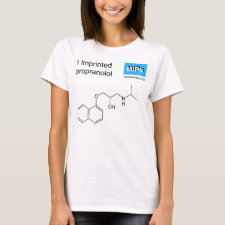
Authors: Yan M, Jiang F, Fei HT, Ma FG, Yan J, Wu YL
Article Title: Polydopamine-based multilevel molecularly imprinted nanocomposite membranes comprising metal organic frameworks for selective recognition and separation.
Publication date: 2022
Journal: Journal of Colloid and Interface Science
Volume: 606
Page numbers: 696-708.
DOI: 10.1016/j.jcis.2021.08.076
Alternative URL: https://www.sciencedirect.com/science/article/pii/S0021979721012935
Abstract: Molecularly imprinted nanocomposite membranes with three-dimensional metal-organic frameworks (MOFs)-based structure (MINMs-TM) were successfully prepared by using propranolol as template molecule. Importantly, for the first time, polycarbonate track etch membranes had been used as the supporting surfaces to construct the polydopamine (PDA)-induced MOFs composite structure, in which the as-prepared PDA-modified surface would promote the crystallization and nucleation of ZIF-8-based composite layer. Based on the entire preparation processes of our design, the as-prepared PDA-induced ZIF-8-modified surfaces could be regarded as the imprinted-initiated units of sol-gel imprinting polymerization. Abundant recognition sits of propranolol were achieved in MINMs-TM, which showed characteristic properties of permeability and selectivity. Therefore, high adsorption capacity (41.31 mg/g) and fast adsorption equilibrium rate (within 30 min) had been successfully achieved. Meanwhile, excellent permselectivity rates (β) of MINMs-TM toward propranolol were also obtained as 5.04, 4.79 and 5.14, which MINMs-TM the successful synthesis of high-affinity and high-density propranolol-imprinted sites. Overall, for the practical selective separation and scalability, we had successfully MINMs-TM the preparation of MINMs-TM-based to selective rebinding and separation of propranolol from complex solution system and mimetic water sample, which had further confirmed the desired and potential applications of many environmental pollutants
Template and target information: propranolol
Author keywords: molecularly imprinted membranes, PDA-induced MOFs nanocomposite, Polycarbonate track etch membranes, propranolol, selective adsorption and separation



Join the Society for Molecular Imprinting

New items RSS feed
Sign-up for e-mail updates:
Choose between receiving an occasional newsletter or more frequent e-mail alerts.
Click here to go to the sign-up page.
Is your name elemental or peptidic? Enter your name and find out by clicking either of the buttons below!
Other products you may like:
 MIPdatabase
MIPdatabase









